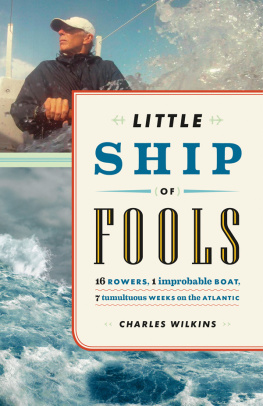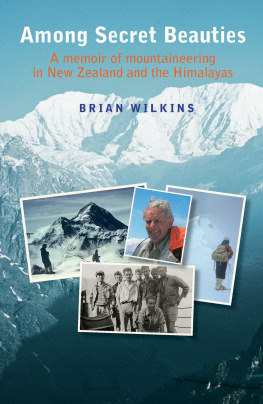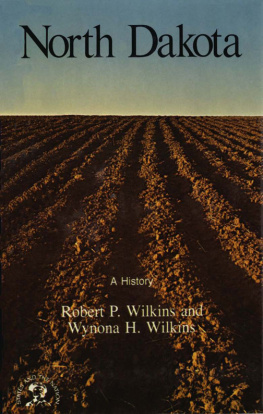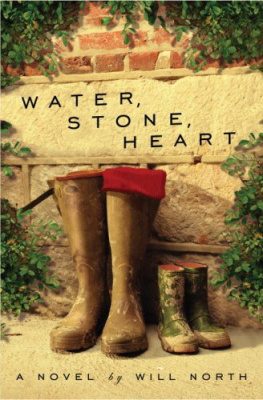HIGH
on the
BIG
STONE
HEART
HIGH
on the
BIG
STONE
HEART
And Further Adventures in the Boreal Heartland
CHARLES WILKINS
NATURAL HERITAGE BOOKS
A MEMBER OF THE DUNDURN GROUP
TORONTO
Copyright Charles Wilkins, 2009
All rights reserved. No part of this publication may be reproduced, stored in a retrieval system, or transmitted in any form or by any means, electronic, mechanical, photocopying, recording, or otherwise (except for brief passages for purposes of review) without the prior permission of Dundurn Press. Permission to photocopy should be requested from Access Copyright.
Copy-edited by Allison Hirst
Designed by Erin Mallory
Printed and bound in Canada by Webcom
Library and Archives Canada Cataloguing in Publication
Wilkins, Charles
High on the big stone heart : and further adventures in the boreal
heartland / by Charles Wilkins.
ISBN 978-1-55002-865-2
1. Thunder Bay Region (Ont.)--Anecdotes. 2. Thunder Bay Region (Ont.)--Biography. I. Title.
FC3094.4.W543 2008 971.3'12 C2008-903971-8
1 2 3 4 5 13 12 11 10 09
We acknowledge the support of the Canada Council for the Arts and the Ontario Arts Council for our publishing program. We also acknowledge the financial support of the Government of Canada through the Book Publishing Industry Development Program and The Association for the Export of Canadian Books, and the Government of Ontario through the Ontario Book Publishers Tax Credit program, and the Ontario Media Development Corporation.
Care has been taken to trace the ownership of copyright material used in this book. The author and the publisher welcome any information enabling them to rectify any references or credits in subsequent editions.
J. Kirk Howard, President
www.dundurn.com
Published by Natural Heritage Books
A Member of The Dundurn Group
Front cover photo: The Sibley Peninsula on the north shore of Lake Superior. Photo by Barry Wokciechowski. Back cover photo: The north shore of Lake Superior near Nipigon. Photo by the author.
for Margie Bettiol and Doug Flegel
and in memoriam Norma and LeoneCONTENTS
- Introduction
- 1. The Survival of the Unfittest
Tips on Decorating Your Debris Hut - 2. Where the Swamp Hags Live
The Redemption of the Back 31 - 3. A Kid with a Smile and a Fishing Pole
The Glorious Last Days of a Stanley Cup Champion - 4. Riot Man
The Outdoor Passions of Maurice "Rocket" Richard - 5. Getting Jaked
Canada's Finest and Funniest Fishing Writer - 6. The Heirs of Barney Giesler
The Sweet Cedar Fragrance of the Boat Factory - 7. Summers Built on Pine
The Family and the Forests of History - 8. The Funkiest Monk of All
Canada's Second Oldest Profession
- 9. The Greatest Show on Earth
Wonders of the Night Sky - 10. The Rinky Dink Rink
Not Having What It Takes - 11. Fishing (Sort of)
Part One - 12. Fishing (Sort of)
Part Two - 13. Hot Metaphors from Dawson City
La Vie Bohme at Fifty-Five Below - 14. Caribou Cops
Riding the Dempster Highway on the
Coldest Day in History - 15. Second Wind
Blue Sails in the Sunlight
- 16. High on the Big Stone Heart
Running the North Shore of Superior
W hen I moved to Thunder Bay from southern Ontario in 1991, I found myself with an exhilarating new range of landscapes and subject matter for my books and magazine stories - the forests, the rock, the wildlife, the old mountains, the lakes. And of course the people, who are all but a subspecies in their adaptations to the wilderness and its distances; and to the requirements, both interior and exterior, of living half the year in a version of climatic distress, the other half in a paradise made all the more seductive by the perils and exhaustion of winter.
Perhaps more importantly, life in the North gave me a new model for my imagination, a way of seeing the world that nourished the sort of freedom and risk that become possible for a writer when the old context and self-expectations are removed, and suddenly there is nothing to lose by being oneself and by telling ones stories in the most open and honest of ways.
Not that I ever fully relinquished my attachments to "the south" - or to big cities and all they represent. It has occurred to me that I liked the cities more for not having to live in them, and I continued to spend my summers in central Ontario, and to work regularly in, say, Toronto and Montreal.
The stories and essays that follow are not all set in Northwestern Ontario or on the shores of Lake Superior - or indeed even in an area that people up here think of as the North. Some are set no further north than Muskoka, Ontario (which in Toronto may seem a subarctic landscape, but to people in Thunder Bay is considered barely north of the Equator). Other pieces are set so far north - on, say, Hudson Bay or in the northern Yukon - as to make my home turf on Lake Superior seem "way down south."
Whatever the case, each piece has at its core some essential connection to the forests, the wildlife, the waters, the winters. Or to the mystique or "idea" of the North - an abstraction perhaps bearing little credibility in some parts of the country but held inviolable in these parts and significant to our perception of who we are.
What I am getting at as I bring this brief introduction to a close is that the North, while of course literally a geographic designation, is also a habit of mind. It is a perspective born not just of a proximity to wilderness, or of isolation or self-reliance, but of our deepest inner longings for warmth, for light, for the satisfactions of attachment. Or, paradoxically, for separation and space.
It is a complex perspective inspired by a complex land, and my hope is that in one way or another it will be exemplified by the stories that follow.
THE SURVIVAL OF THE UNFITTEST
Tips on Decorating Your Debris Hut
I have little to say by way of introduction to this story, apart from noting that when I got home from the sojourn in the wilderness that is at the heart of the piece and began to write about it, it occurred to me that I was probably a degree or two loopier than the average fifty-eight-year-old, and that if I ever achieved proper adulthood I should stop thinking of myself as someone who could survive anything up to and including hunger, solitude, morbidity, lunacy, and tick infestation. On the other hand, the experience reminded me that I still had enough jam and self-confidence to get up from my desk and go out and take a risk in the interest of adventure and self-awareness. The piece was written for James Little at Explore magazine, who urged me to "attempt to be funny" in describing what it was like to approach death via exposure and starvation.

















